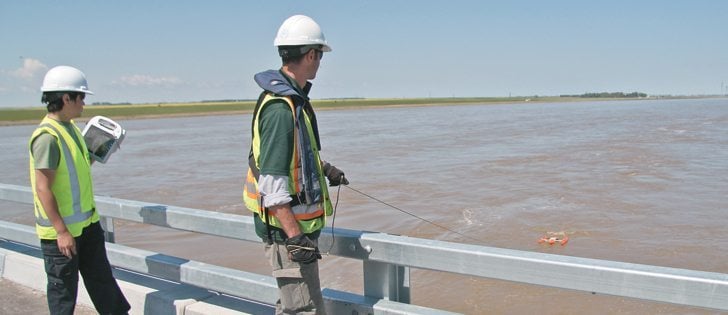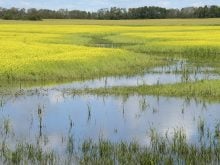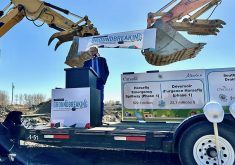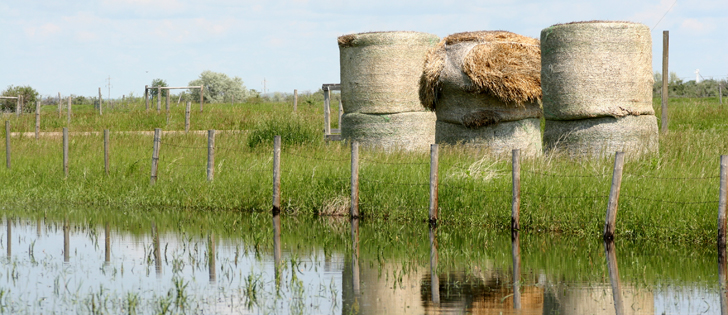Assiniboine River | Engineering firm hired to conduct a study, which will evaluate options and benefits of building a second reservoir
It’s been considered before and is being looked at now: a dam on the Assiniboine River downstream of the Shellmouth Reservoir.
The Manitoba government is evaluating the cost-benefits of a second reservoir on the Assiniboine River as part of a flood mitigation study evaluating all options to prevent damage from future flood events in the Assiniboine and Lake Manitoba watersheds.
The government contracted KGS Group, an engineering firm, to conduct the study following the Assiniboine River flood of 2011.
A provincial spokesperson confirmed a dam on the Assiniboine, downstream of the Shellmouth Reservoir, is part of the conversation.
Read Also

Alberta researcher helps unlock the economics of farming
Lethbridge Polytechnic researcher helping agriculture producers with decision-making tools in economic feasibility
“Options are being reviewed as part of the Assiniboine River-Lake Manitoba flood mitigation study that is just wrapping up,” the spokesperson said.
“A few of the options reviewed were dams along the Assiniboine River at Holland and at Alexander.”
Since 2011, farmers, policy makers and the media have focused on Lake Manitoba and the need to dig an outlet channel between the lake and Lake St. Martin to drain the lake when necessary.
The cost of such a project has been estimated at $250 million and higher.
Alf Warkentin, a long-time Manitoba flood forecaster who is now retired, said every alternative should be on the table, including dams on the Assiniboine.
“The Assiniboine already has a pretty deep valley, between Brandon and Portage, and the Holland area is a good spot for it,” said Warkentin, who is a sub-contractor for the KGS study, working on computer modeling of flood events.
“I think all the options have to be looked at carefully. And the benefit-cost ratios have to be looked at. You have to put your money where you’re going to get the biggest bang for it.”
The idea of a second reservoir on the Assiniboine downstream of Shellmouth was considered decades ago in Manitoba.
Eric Blais, a hydrologist with 30 years experience, said those discussions were focused on water supply.
“Possibly you could build a dam in Holland, which has always been looked at in terms of a water supply reservoir,” he said. “It would offer benefits for people looking for water to irrigate. You could take water from the reservoir, put it down the Boyne (River) and allow more people to irrigate there…. If you’re looking at true economic benefit, yeah, it’s better than a ditch.”
However, the reservoir wouldn’t prevent flooding during extreme events.
“The size of reservoir you could build in Holland, even though it’s a large reservoir, would have almost zero impact on a 2011 magnitude flood,” Blais said.
“If you raise the 33rd largest lake in the world by some three and a half feet, you would have to have a huge reservoir (to mitigate that flood)…. The peak would have gone through almost the same.”
Blais said investments in flood mitigation are based on the damage prevented by a structure or strategy.
“If we’re looking at that aspect, this reservoir just doesn’t cut it for large flood events.”
Another water expert, with years of experience on the Prairies but who declined to be identified, agreed a dam near Holland is feasible, but it could destroy a substantial chunk of land in the Assiniboine River Valley north of Holland.
Warkentin said any decision and subsequent investment in flood mitigation must be fair and shouldn’t favour one group or region over another.
Still, there are other considerations besides flood control.
“Lately we haven’t been talking much about water supply, but this climate can change again and we could be back into droughts.”
The provincial spokesperson said the government has scheduled open houses in November so that the public can comment on flood mitigation alternatives.
















